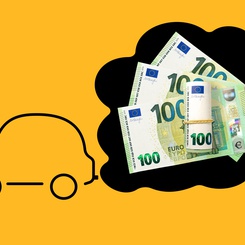With ESSEC Knowledge Editor-in-chief
There’s a lot of buzz on sustainability practices in business, but much of today’s discourse and research on sustainability in business has focused on the “formal” economic sector. In a recent chapter for the Research Handbook of Sustainability Agency, Stefan Gröschl sought to expand this research by exploring sustainability activities in informal economies.
What are informal economies?
“Informal economy” refers to ‘economic activities by workers and economic units that are – in law or in practice – not covered or insufficiently covered by formal arrangements’ (International Labour Organization, 2002: paragraph 3). Informal economies do not include economic activities that are of an illegal nature or organizations such as drug cartels and other criminal enterprises, gangs and syndicates that engage in illegal economic activities. Today, around 60% of employees work in informal economics (ILO, 2018), with many of these located in countries with emerging economies.
People, namely informal workers, are the heart of informal economic activities. Other main players include policy makers, individuals and businesses undertaking formal economic activities and interacting with the informal sector, NGOs supporting informal workers, and the communities in which these activities occur. All these stakeholders are likely to have different motives and goals, making it important to understand their agendas and how they intersect to better support sustainability activities. Despite this, research on sustainability in economic activities has focused on the formal sector.
What leads people to take on informal economic activities?
Poverty. More specifically, a lack of alternative economic opportunities is a main driver leading people to participate in the informal economy. Combined with a lack of education and training, this perpetuates a vicious cycle that makes it challenging for people to cross over into the formal economic sector. Unsurprisingly, agriculture and production are key sectors in informal economies.
Other factors include transferring production to countries where costs are lower and economic processes being restructured, leading to increased unemployment and fewer formal economic job opportunities. In certain countries, the cost of labor regulations is another driver, albeit a controversial one.
While informal economies give people a means to earn a living who lack other options, these practices can lead to worker exploitation and marginalization, especially for women and youth. Another negative effect of informal labor activities is the impact of the environment, as these activities often have a detrimental effect on the environment, in part due to their growth in dense urban areas, which leads to increased consumption and waste. This makes it all the more crucial to take a magnifying glass to what sustainable business practices look like, or could look like, in the informal sector.
Sustainability in informal economics: pitfalls and possibilities
While it’s true that informal economic activities can be far from an ideal solution for those involved or for the environment, the fact remains that informal employment provides people with an income and can be a coping strategy. Such activities have fewer barriers to entry than formal economics, with lower skill, training, and educational requirements. There are also opportunities for sustainability. These activities could be used to promote innovation and sustainable business practices, not least because they give vulnerable people the opportunity to earn a living, providing a pathway to equality and women empowerment. Policy makers and NGOs could leverage these activities to improve the wellbeing of the global poor and to address global issues like climate change.
There are a few key characteristics that could be useful for sustainable development. Those working in informal economic activities tend to display an entrepreneurial spirit, flexibility, and collaborative mindsets, working closely with their communities. Since their activities are less formally structured, there is more flexibility and adaptability that they can leverage to address environmental demands. Take the example of informal waste collectors: these individuals are very autonomous and make their own decisions on what and when to collect and how to sell their collections. This is highly beneficial to the environment, as increased collection of materials such as plastics means less ends up in the ocean and more can be reused. This could also be beneficial for companies in the formal sector, who could reintroduce these recycled plastics into their value chain for a more positive impact on the environment - and on their image. In this way, formal and informal economic activities can complement each other, and indeed, the two often do intermingle already, admittedly making a complex picture for those wishing to study informal economics.
It’s not easy being green (in informal economics)
One key question is the actual motive of sustainable practices in informal activities: are they purposeful, or a byproduct of something else? The aforementioned waste collectors are not necessarily driven by a desire to protect the ocean, but more often by a desire to lift themselves out of poverty and the flexibility of the job. This means it’s important to look at the micro-foundations of informal economics, including contextual factors like access to training and financial support. It also means that it’s important to involve those on the ground in this kind of research, like educators, NGOs, and community leaders.
It’s also key for states to integrate their informal business sectors into their formal activities, or at least include such activities in growth strategies and environmental programs. One barrier to doing so is the lack of policies addressing the full spectrum of informal economies. The International Labor Organization has identified seven policy areas to target transitioning informal economies into formal ones:
● growth strategies and quality employment generation
● regulatory environment
● organization, representation and dialogue
● equality of gender, ethnicity, race, caste, disability, and age
● entrepreneurship, skills, finance, management, and access to markets
● extension of social protection, social security, and social transfers
● local (rural and urban) development strategies
By researching these subjects and collaborating with key actors like policy makers, NGOs, and lobbying groups, researchers can better identify the different causes and types of informal sectors to build policy, protect workers, and bolster the informal economy.
The informal economic sector has potential for increased sustainability, given the characteristics of its workers and the nature of the work. While there are challenges, like the complex nature of the relationship between the formal and the informal sectors, there are also opportunities to improve the working conditions and indeed, the lives of billions of people worldwide, and to protect our environment while doing so.
Further reading
Gröschl, S. (2021). Sustainability practices in informal economies: actors, roles, and research outlook. In Research Handbook of Sustainability Agency. Edward Elgar Publishing.
.ILO (International Labour Organization) (2018), Women and men in the informal economy: A statistical picture, Geneva: ILO.
ILO (International Labour Organization) (2002), Resolution concerning decent work and the informal economy, Geneva: ILO, accessed 18 January 2020 at https://www.ilo.org/public/english/standards/relm/ilc/ilc90/pdf/rep-vi.pdf.









